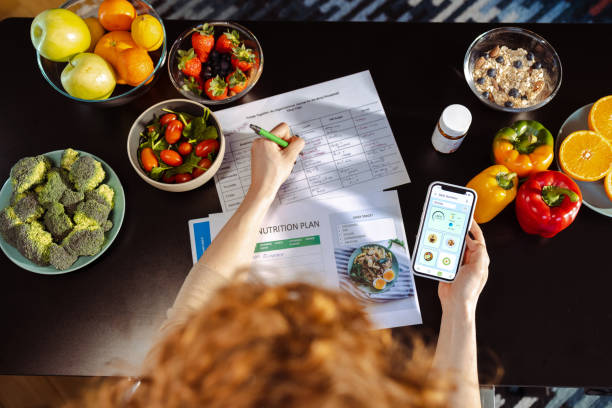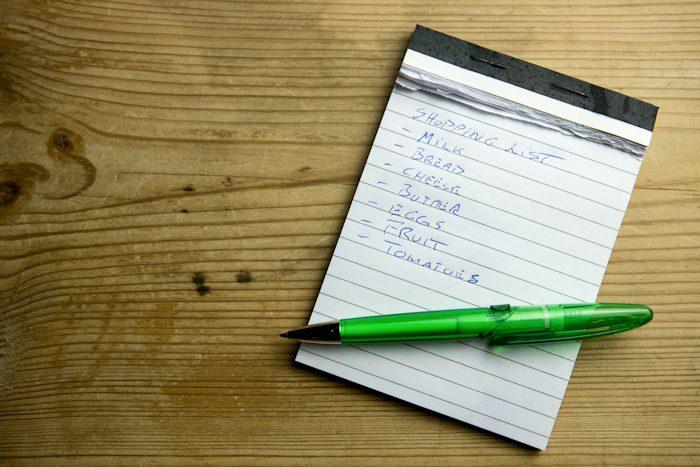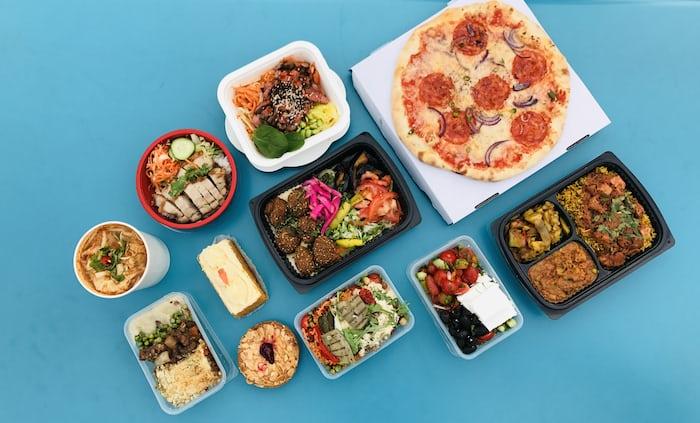How Much Should I Budget For Food?

"How much should I budget for food?"This is a question most people who plan to stay alone or start a family ask. If you want an answer to it, take your time and read on.
There is no generally known stipulated amount to budget for food. It all depends on your income and preference. But if you're confused, and need a guide on the amount to budget or spend on food, this article will help you reach a conclusion.
Here's a guide on how much to spend on food and groceries.

How Much Should I Budget For Food
Factors such as where you live, the costs of food items in your area, your food preference, income, and the number of people you feed determine how much you should budget for food.
However, there are theories and rules that help you decide on the exact amount. Here are a few of them.
The USDA Food Plan Theory
The U.S. Department of Agriculture (USDA) releases a monthly food budget plan to help you estimate how much to spend on food. This plan is divided into four - a thrifty plan, a low-cost plan, a moderate-cost plan, and a liberal plan.
Thrifty Plan
The thrifty plan is a plan for families with low income, who want to spend on homemade nutritional, and cost-effective diets.
According to this plan, a family of four (two adult parents and two children between the ages of six and eleven) should budget $223.60 weekly or $968.80 monthly for food. If you're a couple between the ages of 20 to 50, spending $124.9 weekly or $541.5 monthly is recommendable.
2. Low-Cost Plan
If you're willing to allocate 25-30% more on spending for food, the low-cost plan is for you. This plan is often used as a basis in court to determine child support payments and bankruptcies’ food expenses.
According to this plan, male individuals between the ages of 19 and 70 should spend between the range of $298.60 and $278.60 monthly. For females, spending between $258.90 and $251.70 monthly on food is advisable.
3. Moderate-cost Plan
If your income is high, and you want to allocate more of it to food, use the moderate-cost plan.
For this plan, male individuals between 19 and 70 should spend between $374.50 and $343.70 monthly. Females, on the other hand, should spend between $315.70 and $309.50.
If you're a family of four, this plan recommends spending about $1,306.3 on food in a month.
4. Liberal Plan
The liberal plan is suitable for high-income earners who want to budget more for food. This plan allows you to focus on a healthy diet.
The liberal plan recommends a monthly food budget of $858.8 for a family of two. A family of four with kids between the ages of six to eleven should budget about $1578.1 monthly.

The 60/30/10 or the 50/30/20 Budgeting Rule
If you don't reside in the United States, the USDA plan may not apply to you. Thus, you can make use of the 60/30/10 or 50/30/20 rule for food budgeting.
The 60/30/10 Budgeting Rule
If your priority is to save or pay off debts, the 60/30/10 rule is suitable for you. The rule states that you should allocate 60% of your after-tax income to savings or debt, 30% to needs, and 10% to your wants. In other words, about thirty percent of your income should be spent on food expenses.
For example, if you earn $5,000 per month, you should budget about $1,500 for food and clothing - this is 30% of your income.
The 50/30/20 Budgeting Rule
If your main focus isn't on paying debts or saving, then the 50/30/20 rule is most suited for you.
According to this rule, you should spend 50% of your monthly on needs (food and other necessities), 30% on wants, and 20% on savings or debt. Here's an illustration;
If your monthly income is $2,500, you should spend about $1,250 on food and groceries, and $750 on wants, and put $500 towards your savings.
How To Calculate How Much You Should Spend on Food
If the USDA and other food budgeting rules aren't suitable for you, you can create a personal rule or calculate how much you should spend on food by yourself without depending on data from different sources. To do this, there are certain things you need to consider and highlight.
- Current Expenses On Food
How much are you currently spending on food? Do you want to spend more or do you intend to cut down on your expenses?
If your goal is to spend more on food, then calculate your income and find ways to cut down on other expenses in order to focus more on food.
2. After-tax Monthly Income
The amount you can afford to spend on food greatly depends on your take-home pay. So before you begin your calculations or budgeting process, understand what your income can actually afford.
3. Fixed and Negotiable Expenses
Fixed expenses like rent or debt payments can affect how much you put toward food planning. If you have a lot of fixed expenses, it may be difficult to make changes to what you spend on.
Conduct research on negotiable expenses and find ways to let go of some expenses.
4. Create a Meal Plan
Without a meal plan, it's easy to overspend when shopping for groceries. When you make a meal plan, you can easily point out foods that are expensive or cheap.
How To Create A Food Budget
Creating a food budget saves you from unnecessary expenses and food waste. It also gives insight into how much you should spend on food monthly.
Here's a guide on how to create a food budget:
- Monitor Your Current Spending on Food
Take out all your grocery receipts and review your bank statement to know the exact amount you spend on feeding and groceries. Monitor the type of food, and classify them under expensive or cheap.
2. Know The Cost Of Food Items
Before you start budgeting for food, conduct research on the costs of food items.
Knowing the current price of food items in the market can help you know how much to spend on food each month. It also gives you a clear understanding of meals to stick to.
3. Compare Prices
When finding out the prices of food items, do not rely on the prices from a specific store. Most stores offer tons of discounts and deals that enable you to save money. So it is necessary to make trips to different stores and markets in your local area.
4. Hunt For Discounts
You are making a food budget in order to save money. So, do not neglect discounts, cashback, and offers you come across during grocery shopping.
Take advantage of loyalty programs and any reward system offered by your favorite stores. All these help stretch your food budget.
5. Plan Your Meals
How many meals do you take in a day? Do you plan to increase or decrease the number? It is important to understand your feeding habits as it helps you create an efficient food budget.
Thus, understand your feeding habits, and make plans ahead of each week. Plan your breakfast, lunch, and dinner days ahead.
6. Set a Weekly Spending Limit
Put aside the amount you wish to spend on food each week. Then, go grocery shopping and get food items that would last you for a week - doing this enables you to stick to your budget.
7. Set A Budget
Once you gather the needed information on your feeding habits, prices of food items, and how much you spend on food in a month, go ahead to establish a budget.
Determine how much you would like to spend on food. In addition, examine your past feeding habits and point out areas for change.
Another Interesting Article: How to Cultivate a Budgeting Mindset in 4 Easy Steps
10 Ways To Stay Within Your Grocery Budget
One careless trip to the market can ruin your food budgeting plan. So, to prevent impulse buying and overspending, here are tips and ways to stay within your grocery budget.

Always Make A Shopping List
Whenever you plan to go shopping, make a shopping list that includes only important items. Calculate items on the list, and go shopping with the exact amount - this prevents spending beyond your budget.
Do not go shopping when hungry to avoid impulse buying, and learn to bargain on items in the market.
Aim To Spend Below Budget
Take advantage of opportunities that let you spend below your budget. You can do this by making use of discounts, going for a family dinner, and recycling your food.
Whenever you spend below your budget, it gives you chances to make up for other situations where you overspend.
Utilize LeftOvers
Be intentional about your food portions. Do not throw away portions of leftovers regardless of how little they are. If you store them well, they could be useful in making a new meal, thus saving you from buying groceries for a new meal.
Buy Bulk For Certain Items
Bulking buying helps you save money. However, be careful as it can lead to wastage and overconsumption.
For example, if you stock up on eggs, it can lead and tempt you into eating eggs when it isn't time for lunch or dinner. Thus, understand your habit to know the favorable items to buy in bulk.
Use Coupons and Join Loyalty Programs
Coupons and special deals can help you stay below and within your budget. But be careful with how you make use of coupons. If an item you don't need has a coupon, do not be tempted into buying it.
Additionally, join loyalty programs and shop during sales days or special days. Loyalty programs give you access to member-only discounts and other benefits.
Shop Online
Online shopping comes with its good and bads.
If you shop online, you're more likely to find amazing coupons, cashbacks, deals, special offers, and discounts. However, you can be tempted into adding more to your carts than you really need.
Another Interesting Article: 12 Best Mobile Coupon Apps to Save Money Shopping with Your Smartphone
Avoid Eating Out
Eating out is expensive. A meal in a restaurant can be worth two homemade meals.
So buy all the food items you need, prepare them in large quantities, and store them properly to prevent spoilage.
Create a Shopping Routine
Pick a free day in a week and make it a day for grocery shopping. If you make it a habit to shop only on a specific day, you will avoid the urge to make unplanned purchases.
Prepare your shopping list ahead of the shopping day.
Use a Rebate App
Rebate apps like Rakuten and Ibotta can help you save a lot of money and stay within your budget. With these apps, you can access discount deals and gain cashback on every grocery purchase.
Pay With Cash
Going shopping with your credit or bank card is a dangerous idea. You can be prone to buy items that are not on your shopping list.
Always go shopping with cash - this makes you conscious of your spending.
Bottom Line
Cut your coat according to your size. If your income demands that you spend little on food, then be careful with your spending. However, if you earn high and have few debts to pay off, be generous with your budget for food.
Frequently Asked Questions On Food Budgeting
How Much Do You Spend On Food Per Day?
According to research conducted by Sunmark Credit Union, the average person spends about $11.95 on food and groceries.
What Are The Three P's For Eating On A Budget?
The three P's of food is a food budgeting rule that enables you to abide by a budget. The three P's are Plan, Purchase, and Prepare.
What Three Things Should Each Meal Include?
When preparing each meal, you must include all three core food groups. Carbohydrates, protein, and fat must be included in your breakfast, lunch, and dinner.
https://paypant.com/how-much-should-i-budget-for-food/


Comments
Post a Comment